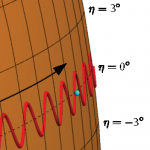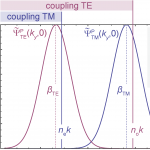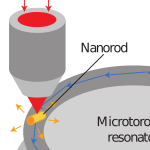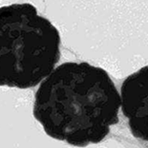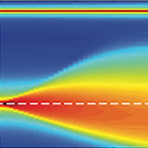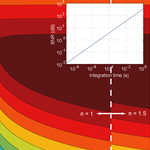Publications
Large format
Small format

"Generalized Wigner-Smith theory for perturbations at resonant exceptional and diabolic point degeneracies "
K. Wang, N. Byrnes and M. R. Foreman, Opt. Lett. 50, 6618-6621 (2025).
K. Wang, N. Byrnes and M. R. Foreman, Opt. Lett. 50, 6618-6621 (2025).

"Topological Engineering of High-Order Exceptional Points through Transformation Optics"
K. Wang, Q. J. Wang, M. R. Foreman and Y. Luo, Laser & Photonics Reviews , e00593 (2025).
K. Wang, Q. J. Wang, M. R. Foreman and Y. Luo, Laser & Photonics Reviews , e00593 (2025).

"Generalized Wigner-Smith analysis of resonance perturbations in arbitrary Q non-Hermitian systems"
N. Byrnes and M. R. Foreman, Phys. Rev. Research 7, 013299 (2025).
N. Byrnes and M. R. Foreman, Phys. Rev. Research 7, 013299 (2025).

"Perturbing scattering resonances in non-Hermitian systems: a generalized Wigner-Smith operator formulation"
N. Byrnes and M. R. Foreman, Newton 1, 100194 (2025).
N. Byrnes and M. R. Foreman, Newton 1, 100194 (2025).
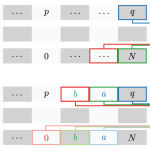
"Bootstrapping cascaded random matrix models: Correlations in permutations of matrix products"
N. Byrnes, G. R. W. Greaves and M. R. Foreman, Phys. Rev. E 110, 015308 (2024).
N. Byrnes, G. R. W. Greaves and M. R. Foreman, Phys. Rev. E 110, 015308 (2024).

"Random matrix theory of polarized light scattering in disordered media"
N. Byrnes and M. R. Foreman, Waves Random Complex Media , 1-29, DOI: 10.1080/17455030.2022.2153305 (2022).
N. Byrnes and M. R. Foreman, Waves Random Complex Media , 1-29, DOI: 10.1080/17455030.2022.2153305 (2022).

"Label-free detection of single nanoparticles with disordered nanoisland surface plasmon sensor"
H. Lee, J. Berk, A. Webster, D. Kim and M. R. Foreman, Nanotechnology 33, 165502 (2022).
H. Lee, J. Berk, A. Webster, D. Kim and M. R. Foreman, Nanotechnology 33, 165502 (2022).

"Polarisation statistics of vector scattering matrices from the circular orthogonal ensemble"
N. Byrnes and M. R. Foreman, Opt. Commun. 503, 127462 (2022).
N. Byrnes and M. R. Foreman, Opt. Commun. 503, 127462 (2022).

"Role of Multiple Scattering in Single Particle Perturbations in Absorbing Random Media"
J. Berk and M. R. Foreman, Phys. Rev. Research 3, 033111 (2021).
J. Berk and M. R. Foreman, Phys. Rev. Research 3, 033111 (2021).

"Theory of Multiple Scattering Enhanced Single Particle Plasmonic Sensing"
J. Berk and M. R. Foreman, ACS Photon. 8, 2227-2233 (2021).
J. Berk and M. R. Foreman, ACS Photon. 8, 2227-2233 (2021).

"Dielectric perturbations: anomalous resonance frequency shifts in optical resonators"
F. Azeem, L. S. Trainor, P. A. Devane, D. S. Norman, A. Rueda, N. J. Lambert, M. Kumari, M. R. Foreman, H. G. L. Schwefel, Opt. Lett. 46, 2477-2480 (2021).
F. Azeem, L. S. Trainor, P. A. Devane, D. S. Norman, A. Rueda, N. J. Lambert, M. Kumari, M. R. Foreman, H. G. L. Schwefel, Opt. Lett. 46, 2477-2480 (2021).

"Symmetry constraints for vector scattering and transfer matrices containing evanescent components: energy conservation, reciprocity and time reversal"
N. Byrnes and M. R. Foreman, Phys. Rev. Research 3, 013129 (2021).
N. Byrnes and M. R. Foreman, Phys. Rev. Research 3, 013129 (2021).

"Tracking Single Particles using Surface Plasmon Leakage Radiation Speckle"
J. Berk, C. Paterson and M. R. Foreman, J. Lightwave Technol. 39, 3950-3960 (2021).
J. Berk, C. Paterson and M. R. Foreman, J. Lightwave Technol. 39, 3950-3960 (2021).

"Single Pixel Polarimetric Imaging through Scattering Media"
K. L. C. Seow, P. Török, M. R. Foreman, Opt. Lett. 45, 5740-5743 (2020).
K. L. C. Seow, P. Török, M. R. Foreman, Opt. Lett. 45, 5740-5743 (2020).

"Universal bounds for imaging in scattering media"
N. Byrnes and M. R. Foreman, New J. Phys. 22, 083023 (2020).
N. Byrnes and M. R. Foreman, New J. Phys. 22, 083023 (2020).

"SNR Enhancement in Brillouin Microspectroscopy using Spectrum Reconstruction"
Y. Xiang, M. R. Foreman and P. Török, Biomed. Opt. Express 11, 1020-1031 (2020).
Y. Xiang, M. R. Foreman and P. Török, Biomed. Opt. Express 11, 1020-1031 (2020).

"On the equivalence of optimisation metrics in Stokes polarimetry"
M. R. Foreman and F. Goudail, Opt. Eng. 58, 082410 (2019).
M. R. Foreman and F. Goudail, Opt. Eng. 58, 082410 (2019).

"Precision and informational limits in inelastic optical spectroscopy"
P. Török and M. R. Foreman, Sci. Rep. 9, 6140 (2019).
P. Török and M. R. Foreman, Sci. Rep. 9, 6140 (2019).

"Nanoparticle-assisted STED nanoscopy with gold nano-spheres"
N. T. Urban, M. R. Foreman, S. W. Hell and Y. Sivan, ACS Photon. 5, 2574-2583 (2018).
N. T. Urban, M. R. Foreman, S. W. Hell and Y. Sivan, ACS Photon. 5, 2574-2583 (2018).

How Latitude Location on a Micro-World Enables Real-Time Nanoparticle Sizing
S. Arnold, D. Keng, E. Treasurer and M. R. Foreman, (Springer, 2017).
S. Arnold, D. Keng, E. Treasurer and M. R. Foreman, (Springer, 2017).

"Whispering gallery mode single nano-particle detection and sizing: the validity of the dipole approximation"
M. R. Foreman, D. Keng, E. Treasurer, J. R. Lopez and S. Arnold, Opt. Lett. 42, 963-966 (2017).
M. R. Foreman, D. Keng, E. Treasurer, J. R. Lopez and S. Arnold, Opt. Lett. 42, 963-966 (2017).

"Polarization-selective out-coupling of whispering gallery modes"
F. Sedlmeir, M. R. Foreman, U. Vogl, R. Zeltner, G. Schunk, D. Strekalov, C. Marquardt, G. Leuchs and H. G. L. Schwefel, Phys. Rev. Applied 7, 024029 (2017).
F. Sedlmeir, M. R. Foreman, U. Vogl, R. Zeltner, G. Schunk, D. Strekalov, C. Marquardt, G. Leuchs and H. G. L. Schwefel, Phys. Rev. Applied 7, 024029 (2017).

"Dielectric tuning and coupling of whispering gallery modes using an anisotropic prism"
M. R. Foreman, F. Sedlmeir, H. G. L. Schwefel and G. Leuchs, J. Opt. Soc. Am. B 33, 2177-2195 (2016).
M. R. Foreman, F. Sedlmeir, H. G. L. Schwefel and G. Leuchs, J. Opt. Soc. Am. B 33, 2177-2195 (2016).

"Integrated plasmonic metasurfaces for spectropolarimetry"
W. T. Chen, P. Török, M. R. Foreman, C. Y. Liao, W.-Y. Tsai, P. R. Wu and D. P. Tsai, Nanotechnology 27, 224002 (2016).
W. T. Chen, P. Török, M. R. Foreman, C. Y. Liao, W.-Y. Tsai, P. R. Wu and D. P. Tsai, Nanotechnology 27, 224002 (2016).

"Optimal frames for polarization state reconstruction"
M. R. Foreman, A. Favaro and A. Aiello, Phys. Rev. Lett. 115, 263901 (2015).
M. R. Foreman, A. Favaro and A. Aiello, Phys. Rev. Lett. 115, 263901 (2015).

"Thermal characterisation of (bio)polymers with a temperature-stabilised whispering gallery mode microsensor"
E. Kim, M. R. Foreman, M. D. Baaske and F. Vollmer, Appl. Phys. Lett. 106, 161101 (2015).
E. Kim, M. R. Foreman, M. D. Baaske and F. Vollmer, Appl. Phys. Lett. 106, 161101 (2015).

"Optical tracking of anomalous diffusion kinetics in polymer microspheres"
M. R. Foreman and F. Vollmer, Phys. Rev. Lett. 114, 118001 (2015).
M. R. Foreman and F. Vollmer, Phys. Rev. Lett. 114, 118001 (2015).

"Whispering gallery mode sensors"
M. R. Foreman, J. D. Swaim and F. Vollmer, Adv. Opt. Phot. 7, 168-240 (2015).
M. R. Foreman, J. D. Swaim and F. Vollmer, Adv. Opt. Phot. 7, 168-240 (2015).

"Single-molecule nucleic acid interactions monitored on a label-free microcavity biosensor platform"
M. D. Baaske, M. R. Foreman and F. Vollmer, Nature Nanotech. 9, 933-939 (2014).
M. D. Baaske, M. R. Foreman and F. Vollmer, Nature Nanotech. 9, 933-939 (2014).

"Experimental proof of concept of nanoparticle assisted STED"
Y. Sonnefraud, H. G. Sinclair, Y. Sivan, M. R. Foreman, C. Dunsby, M. A. A. Neil, P. M. W. French and S. A. Maier, Nano. Lett. 14, 4449-4453 (2014).
Y. Sonnefraud, H. G. Sinclair, Y. Sivan, M. R. Foreman, C. Dunsby, M. A. A. Neil, P. M. W. French and S. A. Maier, Nano. Lett. 14, 4449-4453 (2014).

"Enhanced nanoparticle detection with liquid droplet resonators"
M. R. Foreman, S. Avino, R. Zullo, H.-P. Loock, F. Vollmer and G. Gagliardi, Eur. Phys. J. Spec. Top. 223, 1971-1988 (2014).
M. R. Foreman, S. Avino, R. Zullo, H.-P. Loock, F. Vollmer and G. Gagliardi, Eur. Phys. J. Spec. Top. 223, 1971-1988 (2014).

"Confocal polarization imaging in high numerical aperture space"
C. Macias-Romero, M. R. Foreman, P. R. T. Munro and P. Török, Opt. Lett. 39, 2322-2325 (2014).
C. Macias-Romero, M. R. Foreman, P. R. T. Munro and P. Török, Opt. Lett. 39, 2322-2325 (2014).

"Optimizing detection limits in whispering gallery mode biosensing"
M. R. Foreman, W.-L. Jin and F. Vollmer, Opt. Express 22, 5491-5511 (2014).
M. R. Foreman, W.-L. Jin and F. Vollmer, Opt. Express 22, 5491-5511 (2014).

"Revealing molecular structure and orientation with Stokes vector resolved second harmonic generation microscopy"
N. Mazumder, C.-W. Hu, J. Qiu, M. R. Foreman, C. Macias-Romero, P. Török and F.-J. Kao, Methods 66, 237-245 (2014).
N. Mazumder, C.-W. Hu, J. Qiu, M. R. Foreman, C. Macias-Romero, P. Török and F.-J. Kao, Methods 66, 237-245 (2014).

"Spectral broadening in Brillouin imaging"
G. Antonacci, M. R. Foreman, C. Paterson and P. Török, Appl. Phys. Lett. 103, 221105 (2013).
G. Antonacci, M. R. Foreman, C. Paterson and P. Török, Appl. Phys. Lett. 103, 221105 (2013).

"Level repulsion in hybrid photonic-plasmonic microresonators for enhanced biodetection"
M. R. Foreman and F. Vollmer, Phys. Rev. A 88, 023831 (2013).
M. R. Foreman and F. Vollmer, Phys. Rev. A 88, 023831 (2013).

"Theory of resonance shifts of whispering gallery modes by arbitrary plasmonic nanoparticles"
M. R. Foreman and F. Vollmer, New J. Phys. 15, 083006 (2013).
M. R. Foreman and F. Vollmer, New J. Phys. 15, 083006 (2013).

"Phase-retrieved pupil function and coherent transfer function in confocal microscopy"
M. R. Foreman, C. L. Giusca, P. Török and R. K. Leach, J. Microsc. 251, 99-107 (2013).
M. R. Foreman, C. L. Giusca, P. Török and R. K. Leach, J. Microsc. 251, 99-107 (2013).

"Determination of the transfer function for optical surface topography measuring instruments - a review"
M. R. Foreman, C. L. Giusca, J. M. Coupland, P. Török and R. K. Leach, Meas. Sci. Technol 24, 052001 (2013).
M. R. Foreman, C. L. Giusca, J. M. Coupland, P. Török and R. K. Leach, Meas. Sci. Technol 24, 052001 (2013).

"Stokes vector based polarization resolved second harmonic microscopy of starch granules"
N. Mazumder, J. Qiu, M. R. Foreman, C. Macias-Romero, P. Török and F.-J. Kao, Biomed. Opt. Express 4, 538-547 (2013).
N. Mazumder, J. Qiu, M. R. Foreman, C. Macias-Romero, P. Török and F.-J. Kao, Biomed. Opt. Express 4, 538-547 (2013).

"Independence of plasmonic near-field enhancements to illumination beam profile"
M. R. Foreman, Y. Sivan, S. A. Maier and P. Török, Phys. Rev. B 86, 155441 (2012).
M. R. Foreman, Y. Sivan, S. A. Maier and P. Török, Phys. Rev. B 86, 155441 (2012).

"Polarization-resolved second harmonic generation microscopy with a four-channel Stokes-polarimeter"
N. Mazumder, J. Qiu, M. R. Foreman, C. Macias-Romero, C. Hu, H. Tsai, P. Török and F.-J. Kao, Opt. Express 20, 14090-14099 (2012).
N. Mazumder, J. Qiu, M. R. Foreman, C. Macias-Romero, C. Hu, H. Tsai, P. Török and F.-J. Kao, Opt. Express 20, 14090-14099 (2012).

"Spatial and temporal variations in vector fields"
C. Macias-Romero, M. R. Foreman and P. Török, Opt. Express 19, 25077-25083 (2011).
C. Macias-Romero, M. R. Foreman and P. Török, Opt. Express 19, 25077-25083 (2011).

"Fundamental limits in single molecule orientation measurements"
M. R. Foreman and P. Török, New J. Phys. 13, 093013 (2011).
M. R. Foreman and P. Török, New J. Phys. 13, 093013 (2011).

"Spin-orbit coupling and conservation of angular momentum flux in non-paraxial imaging of forbidden radiation"
M. R. Foreman and P. Török, New J. Phys. 13, 063041 (2011).
M. R. Foreman and P. Török, New J. Phys. 13, 063041 (2011).

"Synthesis of structured partially spatially coherent beams"
C. Macias-Romero, R. Lim, M. R. Foreman and P. Török, Opt. Lett. 36, 1638-1640 (2011).
C. Macias-Romero, R. Lim, M. R. Foreman and P. Török, Opt. Lett. 36, 1638-1640 (2011).

"Computational methods in vectorial imaging"
M. R. Foreman and P. Török, J. Mod. Opt. 58, 339-364 (2011).
M. R. Foreman and P. Török, J. Mod. Opt. 58, 339-364 (2011).

"Coherent long-distance signal detection using stimulated emission: a feasibility study"
T. Dellwig, M. R. Foreman and F.-J. Kao, Chinese J. Phys. 48, 873-884 (2010).
T. Dellwig, M. R. Foreman and F.-J. Kao, Chinese J. Phys. 48, 873-884 (2010).

"Information and resolution in electromagnetic optical systems"
M. R. Foreman and P. Török, Phys. Rev. A 82, 043835 (2010).
M. R. Foreman and P. Török, Phys. Rev. A 82, 043835 (2010).

"Focusing of inhomogenous partially coherent, partially polarised electromagnetic fields"
M. R. Foreman and P. Török, J. Opt. Soc. Am. A 26, 2470-2479 (2009).
M. R. Foreman and P. Török, J. Opt. Soc. Am. A 26, 2470-2479 (2009).

"A priori information and optimisation in polarimetry"
M. R. Foreman, C. Macias-Romero and P. Török, Opt. Express 16, 15212-15227 (2008).
M. R. Foreman, C. Macias-Romero and P. Török, Opt. Express 16, 15212-15227 (2008).

"Determination of the three dimensional orientation of single molecules"
M. R. Foreman, C. Macias-Romero and P. Török, Opt. Lett. 33, 1020-1022 (2008).
M. R. Foreman, C. Macias-Romero and P. Török, Opt. Lett. 33, 1020-1022 (2008).

"Inversion of the Debye-Wolf diffraction integral using an eigenfunction representation of the electric fields in the focal region"
M. R. Foreman, S. S. Sherif, P. R. T. Munro and P. Török, Opt. Express 16, 4901-4917 (2008).
M. R. Foreman, S. S. Sherif, P. R. T. Munro and P. Török, Opt. Express 16, 4901-4917 (2008).

"Eigenfunction expansion of the electric fields in the focal region of a high numerical aperture focusing system"
S. S. Sherif, M. R. Foreman and P. Török, Opt. Express 16, 3397-3407 (2008).
S. S. Sherif, M. R. Foreman and P. Török, Opt. Express 16, 3397-3407 (2008).

"Photon statistics in single molecule orientational imaging"
M. R. Foreman, S. S. Sherif and P. Török, Opt. Express 15, 13597-13606 (2007).
M. R. Foreman, S. S. Sherif and P. Török, Opt. Express 15, 13597-13606 (2007).
Errata : A list of known minor errors and typographical mistakes in published works can be found here.






















